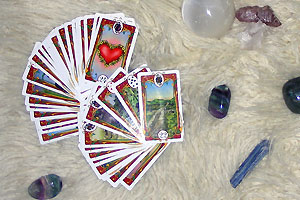Qualified Holistic / Complementary Therapist and Shamanic Practitioner
at The Courtyard Craft Centre, Huntick Rd, Lytchett Minster, Dorset, BH16 6BA.
History of the Lenormand Oracle
My articles are subject to copyright law and are not permitted to be copied or used without my written consent
The "Lenormand Oracle"... what comes to mind when you hear that name? Ancient Oracle? Gypsy Tarot? Playing Card Fortune Telling perhaps? ... or maybe you have never even heard of it!
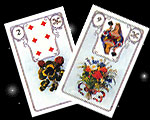
This oracle is named after Mlle Marie Anne Lenormand, a famous French fortune teller of the late 18th and early 19th centuries, considered by many to be the greatest cartomancer of all time. The accuracy of her predictions spread her fame and drew a large clientele from the rich nobility of France even including Josephine de Beauharnais who later became the Empress Josephine, wife of Napoleon Bonaparte.
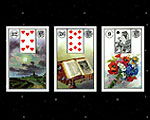
But her name is all that connects Mlle Lenormand with
this oracle. Mlle Lenormand did not design her own cards
but used the Tarot and other decks commonly available at
the time. Nor, despite being a prolific writer in her
later years, did she ever describe her method of
interpreting the cards.
So why does this oracle bear her name? Mlle Lenormand’s
fame had created enormous interest in cartomancy. In
1845, two years after Lenormand’s death, an enterprising
publisher, Grimaud, produced a deck of cards called ‘Le
Grand Jeu de Mlle Lenormand’ from information claimed to
have been disclosed by a supposed student of the late
fortune teller. The deck comprised of 54 cards rich in
symbolism. The cards showed scenes of Greek mythology,
star pictures, geomantic symbols, 22 letters (Kabbala),
7 talismans, playing cards and flowers!
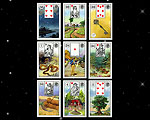
Over the next few years several decks bearing the Lenormand name and containing various numbers of cards were produced by different publishers. A “Petit Jeu” of 36 cards was produced as a concise version but was still intricate in its symbolism.
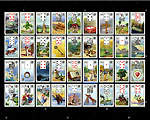
Around 1850, decks of a much simpler design were published in Germany. These decks consisted of 36 sequentially numbered cards each bearing a single mnemonic image. It is thought that these were based on a deck design published in Nuremberg around 1800 that used the numbered cards for a running game played with dice. Small images of regular playing cards were set into the larger picture and the decks were marketed under the Lenormand name together with a small instruction booklet for reading the cards.
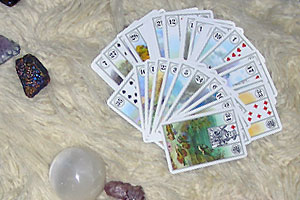
The simplicity and immediately recognisable symbolism
of this design made it extremely popular in Germany and
it has subsequently spread throughout Europe and the
western world.
If you wish to know more about the Lenormand, I've
written a special interactive program that makes it easy
to learn the Lenormand Oracle.
www.Lenormand-Oracle.com
If you have any further questions please do not hesitate to contact me, in the meantime, I hope that you found this article interesting.
Thank you,

This article is copyright and is not to be copied or quoted anywhere without my permission. However, you may provide a link to it if you wish to share it.
The link to this page is: http://www.sandycristel.com/lenormand_history.php
Snippet ...
"Sandy Cristel personally recommends that you download her FREE Interactive Lenormand programme!!"
I guarantee you will LOVE it!
Quick Links to other Articles
My Favourite Deck
